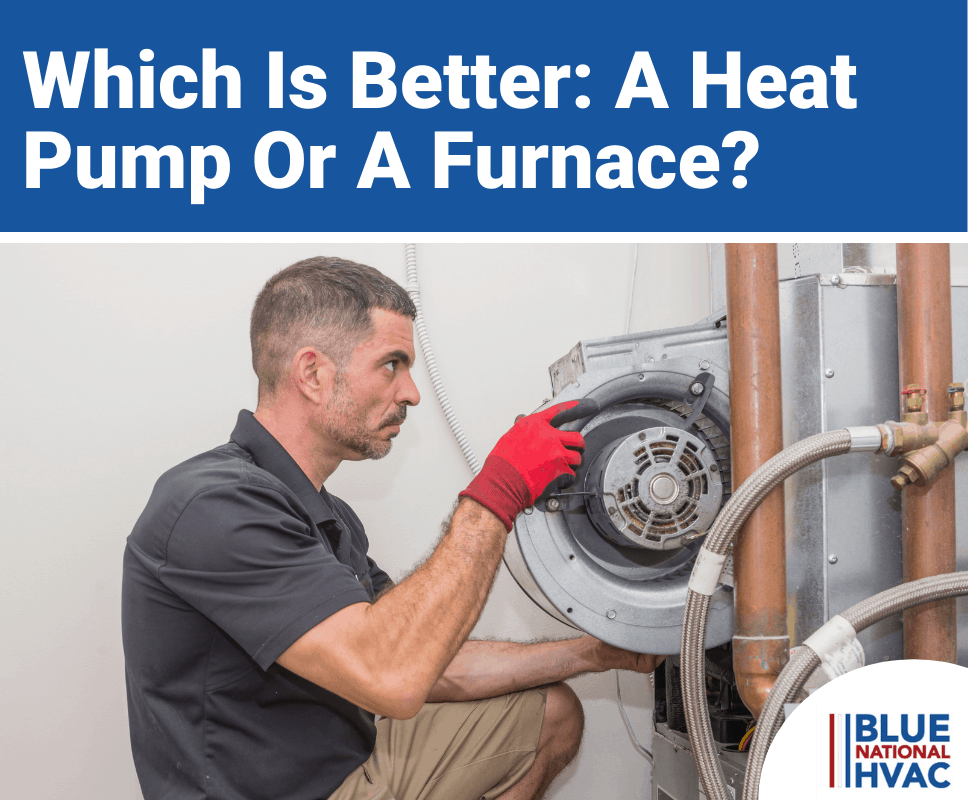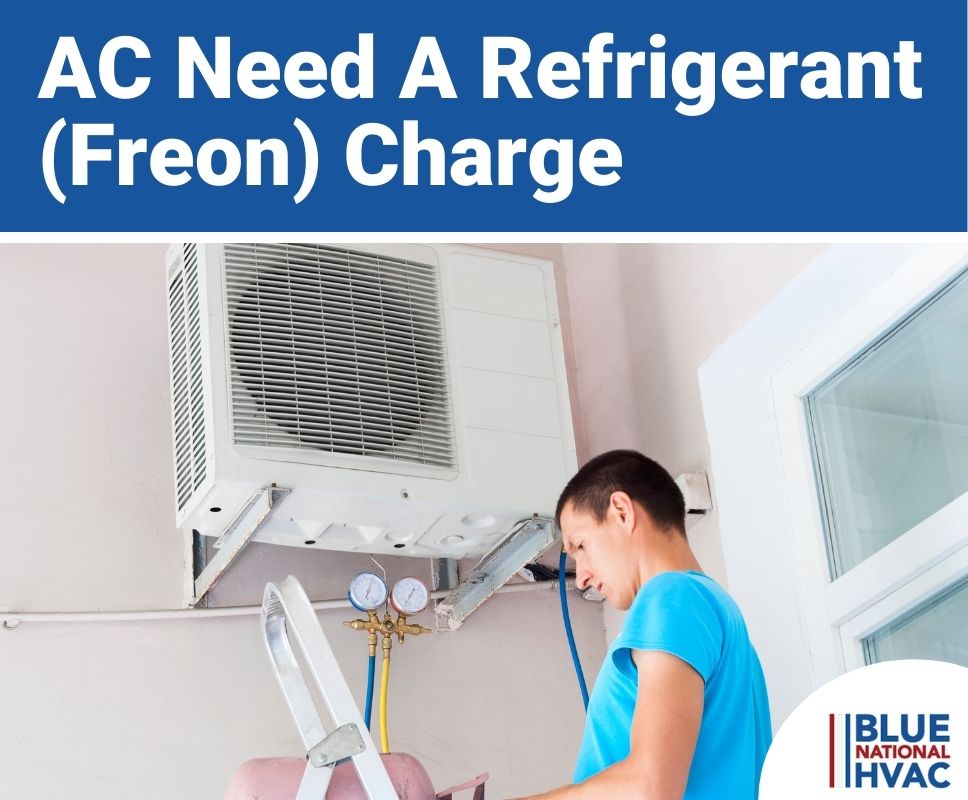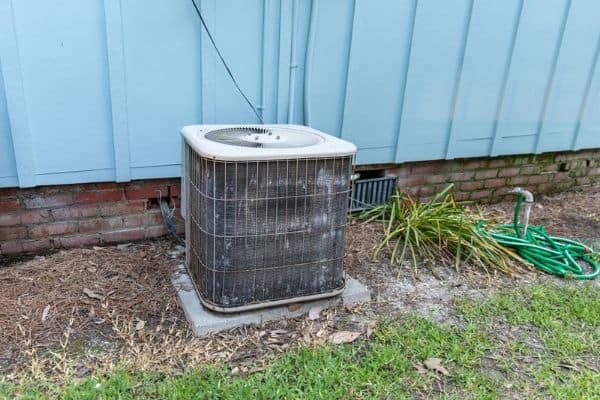Top 7 Differences Between Heat Pump and Furnace
Furnaces and heat pumps are often falsely thought of as synonymous by homeowners. While they both keep your home warm in the winter months, they have distinct differences. Furnaces are gas-fired or electric devices, and heat pumps are systems that use the vapor compression refrigeration cycle as their modi operandi.
Let’s take a look at the major differences between heat pumps and furnaces.
How They Make Heat
The most significant difference between heat pumps and furnaces is how they heat your home.
Gas Furnaces
Gas furnaces heat homes by igniting natural gas (or propane and other fossil fuels) in the burner. The flames in the burner heat the heat exchanger while the excess combustion gas and carbon monoxide is exhausted outside via the flue, a chimney-like pipe that connects from your furnace to your roof.
The heat exchanger heats up from exposure to the open flames and transfers its heat to the air that moves past it. The furnace’s blower pushes the warm air into the ductwork, where it travels out of the supply vents in every room of your home.
As the heated air moves into the rooms through the supply vents, it rises to the ceiling since it’s less dense than the colder air in the room. The cold air is then sucked back into the return vents, where it travels to the heat exchanger to get warmed. This cycle continues until your home is heated to the temperature setpoint on your thermostat.
Electric Furnaces
Electric heaters work similarly to gas furnaces. Instead of using combustion to warm the heat exchanger, an electrical current is passed through a series of electrical resistors, which converts the electrical current into heat. This electrical heating element takes the place of the heat exchanger in a gas furnace but otherwise works in a similar fashion to heat your home.
Heat Pumps
Heat pumps can take many shapes and forms, but the two most common types are air-source heat pumps and ductless mini-split heat pumps. Other less common types of heat pumps include water-source and geothermal heat pumps.
Air-source heat pumps look very similar to a central air conditioning system and have an indoor and outdoor unit. They are ducted to your home just like a furnace and central air conditioner.
Ductless mini-split heat pumps are physically smaller and are design to heat single rooms or zones. They also have an indoor unit that is mounted on a wall and an outdoor unit that is typically mounted next to the home.
Dustless mini-split and air-source heat pumps use the same principle of operation- the vapor compression refrigeration cycle to heat your home.
A heat pump provides heat to your home using the vapor compression refrigeration cycle. This cycle involves the major components of a heat pump which are connected together in a closed-loop with refrigerant lines filled with refrigerant:
- Compressor – located in the outdoor unit, it compresses, increases the pressure or, and moves the refrigerant throughout the cycle
- Condenser – located in the indoor unit (when in heating mode), it is made up of coils that are filled with the heated refrigerant, a blower forces air across the coils, and the refrigerant’s heat is transferred to the air and pumped through the ductwork
- Thermal expansion valve – after the refrigerant passes through the condenser coils and exchanges its heat with the air, it travels to the thermal expansion valve, which reduces the pressure. As a result of the pressure drop, the refrigerant rapidly cools.
- Evaporator – now that the refrigerant is at a lower temperature, it can now absorb heat due to the latent heat of vaporization property. Through this property, the refrigerant can extract heat from the outside air even when it is below freezing.
You might be thinking – wow! Heat pumps are very complex, what’s the point when a furnace is much simpler and works so well? The reason is simple:
Heat pumps can cool your home too!
Yes, that’s right – they’re 2-in-1 systems that heat your home by using the vapor compression refrigeration cycle described above and could cool your home by reversing the direction of the cycle.
When the cycle is reversed, the heat pump pumps heat out of your home instead of into it. This is the same way central air conditioners work.
Local Climate
Furnaces and heat pumps work better in different climate zones. Heat pumps work extremely efficiently (up to 100% efficiency) in climates with mild winters with average outdoor temperatures of 30°F to 40°F.
Additionally, heat pumps can work as an AC unit in the warm months of the year. However, in extreme hot and cold temperatures, they don’t work as well as regular furnaces and air conditioners.
On the other hand, furnaces have very high heating efficiencies, too, and they fare better in frigid climates, where the temperature is routinely below 30°F in the winter months. Although, for the warm months of the year, you’ll need a separate cooling system.
Installation
Installation of a furnace and a heat pump are both complex processes. Since an air-source heat pump has indoor and outdoor units, it takes a bit more time but not much more. Complete installation of furnaces and heat pumps should not be taken on as DIY projects. It requires a professional’s touch and extensive HVAC knowledge.
Costs
Between air-source heat pumps and gas furnaces, heat pumps are typically more expensive. If you are having a new system installed, here is what you can expect to pay:
- Air-source heat pump: $800 to $3,000 and $3,500 to $7,000 for installation
- Furnace: $700 to $1,000 and $1,700 to $2,500 for installation
As you can see, air-source heat pumps have a significantly higher price. However, remember that they can provide cooling to your home too. Since heat pumps have a dual function, it would be fairer to compare their cost to a furnace and an air conditioner’s costs.
On average, a central air conditioner costs $3,000 to $5,000 for the system and installation. Therefore, an air-source heat pump may be the more cost-effective option compared to a furnace and an air conditioner.
In terms of repair cost, heat pump repairs cost on average $300, whereas furnace repairs cost $250 on average.
Physical Size
Heat pumps take up a larger footprint, but the majority of the system is outside. Therefore, it takes up less space inside your home than a furnace. Furnaces take up more space indoors and are often paired with AC units, which also take up space outside your home.
However, if you live in a mild climate, you may not need an AC unit at all.
Energy Efficiency and Usage
Furnaces and heat pumps are both capable of high-efficiency heating, both with an affordable heating cost. Here are how their average efficiencies compare:
- Air-source heat pump
- Annual Fuel Utilization Efficiency (AFUE): 100% in moderate climates
- Seasonal Energy Efficiency Ratio (SEER): 13 to 21 SEER
- Heating Seasonal Performance Factor (HSPF): 8.7 to 9.5
- Furnaces
- Gas & fuel furnaces AFUE: 80%
- Electric furnaces AFUE: 95-100%
As you can see, both heating systems are highly energy-efficient. In terms of energy usage and the resulting energy costs, heat pumps cost more to operate since they use more energy for home heating but less energy for home cooling.
Safety
Gas furnaces use combustible gases to heat your home. Therefore there is always a risk of a gas leak, carbon monoxide buildup, or a fire. On the other hand, hand pumps use refrigerants which can leak and cause health issues if inhaled.
With that being said, furnaces and heat pumps alike are very safe devices. They are manufactured with strict safety standards and built-in safety mechanisms.
What Are The Advantages and Disadvantages of Heat Pumps?
Heat pumps work by extracting heat from the outside air, and they work the best at temperatures above 30°F. They are a great option if you live in a climate that has relatively mild winters with hotter summer months.
Here are some of the pros and cons of heat pumps:
| Heat Pumps | |
| Advantage | Disadvantage |
| Works well in climates with winter temperature averages of 30 to 40°F | |
| Can work as both a heating and cooling system | Higher energy bills when it’s very cold or scorching outside |
| Smaller indoor footprint than a furnace | If you get hit with a cold spell, you may have to use supplemental electric heaters |
| Mini-split systems don’t need ducts | Can leak refrigerant |
| Highly energy efficient | Outdoor unit is loud |
| No carbon monoxide or gas leak risks |
What Are The Advantages and Disadvantages of Furnaces?
In contrast to heat pumps, furnaces work better in climates that experience harsh winters where the temperature is routinely below 30°F. As such, they are fantastic options for homeowners in the northern U.S. and all of Canada. Here are some of the furnaces’ pros and cons:
| Furnaces | |
| Advantage | Disadvantage |
| Works well in climates with frigid winters | Does not provide cooling |
| Highly energy efficient | Larger indoor footprint than a heat pump |
| If you live in a climate with mild summers, you might not need an AC unit | Gas furnaces directly use fossil fuels |
| Lower energy bills in cold spells | Louder than a heat pump |
| Risk of carbon monoxide or gas leaks |
Which is Cheapest – Heat Pump vs. Furnace?
In general, a furnace is a lower-cost option compared to a heat pump system. For examples, gas furnaces cost between $700 to $1,000 and $1,700 to $2,500 for installation. Air-source heat pumps, which provide heat to the entire house through ductwork (the most similar to furnaces), cost $800 to $3,000 and $3,500 to $7,000 for installation.
With that being said, there are lower-cost heat pumps available, such as a ductless mini-split system. Ductless mini-split systems are lower costs, ranging from $3,500 to $6,000 for materials and labor for one zone. Additionally, if the home does not have pre-existing ductwork – ductless systems are a great option to save on installation costs.
Additionally, when comparing the cost of a furnace to a heat pump, consider the cooling capability of the heat pump. Furnaces can’t cool your home, and if you want AC, you’ll have to buy a separate air conditioner too. With a heat pump, you can do both, which adds considerable value.
Which Option is Best for My Climate?
Furnaces and heat pumps are both great systems for heating your home. However, they each are tailored better to particular climate regions. In fact, most people who have lived in the northern US have never even heard of a heat pump, here’s why:
- Hot/Mild Climate – heat pumps are best for hot or mild climates with winters that don’t often get below 30°F- in general, heat pumps are better for the Southern U.S. states
- Cold Climate – furnaces are the best option as they can efficiently heat your home in cold weather well below 30°F- making them the best choice for the northern states
The reason for this difference is because a heat pump works by extracting heat from the outside air. When the outside air is too cold, the heat pump will struggle to heat the home.
As technology advances, many leading HVAC heat pump manufacturers, such as Carrier, Trane, and Lennox, are designing heat pumps that work efficiently in cold winters.
Both Heat Pumps and Furnaces Should Be Professionally Installed
The installation of heat pumps and furnaces is no “weekend DIY project.” Installing a heat pump or a furnace is a complex process that requires extensive skills and knowledge of HVAC.
If your car needed its engine replaced, you wouldn’t do it yourself unless you are a mechanic. The same logic applies to the replacement and installation of HVAC systems. Whether you’re just browsing available heating systems for your home or need help installing a heat pump or furnace, give us a call! Our experienced HVAC technicians are here to help with all of your heating needs!









